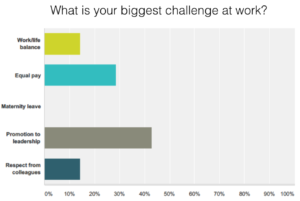The conversation since has centered around hiring a female for the top spot to try to course correct the company. The names being tossed around are certainly experienced enough to handle the job:
- Sheryl Sandberg, COO of Facebook
- Meg Whitman, CEO of Hewlett-Packard Enterprise
- Beth Comstock, GE vice chair
- Marissa Mayer, former CEO of Yahoo
- Susan Wojcicki, CEO of YouTube
- My pick, if it were possible – Wonder Woman
Note: Sandberg’s camp has already said no. But let’s get back to the Amazonian superheroine. Why Wonder Woman? If you haven’t seen the new DC Comic film, add it to your watchlist. The fictional lead character embodies a strong, authoritative, credible yet empathetic female leader who isn’t afraid to take risks or take a stand against the status quo. In every scene, Wonder Woman commands a room with confidence, reading the situation to plan her approach with the right tone. She demonstrates the purest form of executive presence. So do the women listed above.
So what is Executive Presence?
The ability to project gravitas: confidence, poise under pressure and decisiveness. Another key descriptor is communication: well-honed speaking skills, assertiveness and the ability to read an audience or situation.
How important is it?
According to a study by the Center for Talent Innovation, a non-profit research organization in New York, being perceived as leadership material is essential to be promoted into leadership positions. In fact, the 268 senior executives surveyed said “executive presence” counts for 26% of what it takes to get promoted.
Let’s break that down
Confidence – Many studies have been done and books have been written about confidence in women. My favorite is The Confidence Code by Claire Shipman, whom I’ve seen speak on her findings.
“Does confidence come from our genes or can we learn it? Is it best demonstrated by bravado or is there another way to be confident? Is confidence more critical for success than competence? Why do so many women, even the most successful, seem to struggle with feelings of self-doubt?” – Confidence Code
Self-doubt will crush any notion of executive presence in a heartbeat. So, do you fake it til you make it? That may fly temporarily but then we’ll end up feeling like we have “imposter syndrome.” That’s a different blog post altogether. What Shipman and her co-author boiled it down to is your mindset. You must make a deliberate choice to worry less about people-pleasing and perfection and focus more on action, risk-taking and fast failure.
That risk-taking pays off. You’ve probably seen these statistics: Men apply for a job when they meet only 60% of the qualifications, but women apply only if they meet 100% of them. Women need to leave the school room mentality behind. The habits that high-achieving women learned as “good students” in school tend to hold them back at a certain level in their careers. In general, women are better “rule followers” than men. That leads to playing it safe, not sticking your neck out, or taking a chance for fear of failure. Doing that consistently results in C-Suites void of female leaders.
Take a look at the statistics:
- 21 of the Fortune 500 CEOs are women
- Women hold 14% of executive officer positions
- Women hold 16% of board seats
Yet, women account for 57% of college graduates and hold 63% of master’s degrees. So, what is happening to high potential women who should be leading our organizations? There isn’t one answer or solution to this.
Many theories blame a lack of promotion on everything but competencies. These women have the skills, they have the track record of success. But according to those senior executives in the survey cited above, a quarter of a person’s potential for promotion is his or her executive presence. Could this be the missing piece? Are women not speaking up at critical times? Are they not commanding a room when given the opportunity?
This definitely isn’t a case of women not wanting to go for the big jobs. Take a look at the survey of a mostly female audience at the 2016 Women > A Force in Business Conference, hosted by the North Carolina Chamber.

Women are aspiring for leadership positions. How can we help them get there?
Let’s focus on that intangible “X Factor,” their executive presence which accounts for an important characteristic in the way others perceive them.
At Walk West, we run a robust professional development practice that includes workshops on Presentation Coaching, Media & On-Camera Training, Workplace Communication, and our newest offering, Executive Presence for Women.
In this course, we work in a very customized fashion to:
- Build your status, resilience, and gravitas
- Learn to communicate with authority, authenticity, and credibility
- Explore techniques to manage your energy levels and deal with stress
- Discover new strategies for influencing others and changing behaviors
- Unlock the power of your voice so that when you speak, people listen
- Analyze and explore how strong women leaders embody confidence
- Learn how to interrupt and handle interruptions assertively
- How to navigate the female double bind
- Refine your skills by role playing real business scenarios

Wonder Woman Is a Mindset
Playing the title character Wonder Woman, Gal Gadot does a fantastic job portraying the various nuances requisite for executive presence. Sure, Gadot is a 5’10” gorgeous, former model, but we can all learn from her confidence and poise under pressure. And this is not just aspirational. The proof is in the bottom line already: women in the C-Suite are good for profits. A Peterson Institute for International Economics study noted that a C-suite comprised of at least 30 percent women translated to a 15 percent increase in profitability, as opposed to companies with none. Money talks. If higher profits don’t move the needle, what will? Let’s make the ascension to the top more realistic by equipping women with strong executive presence.

